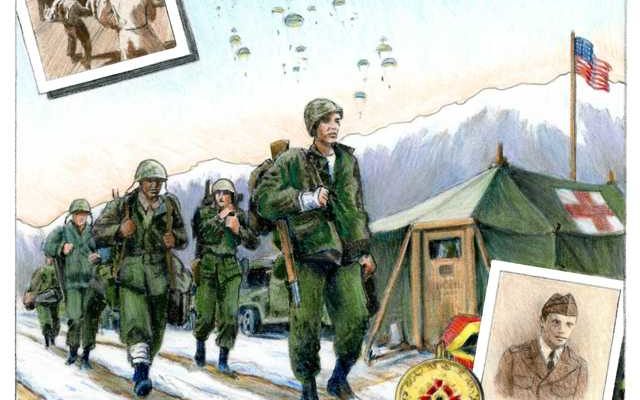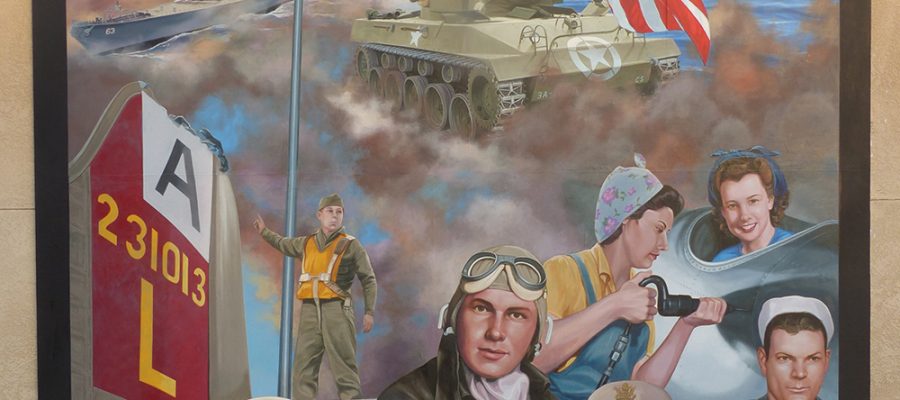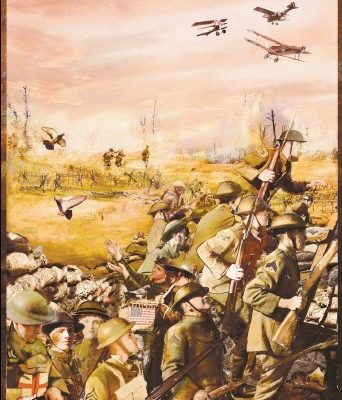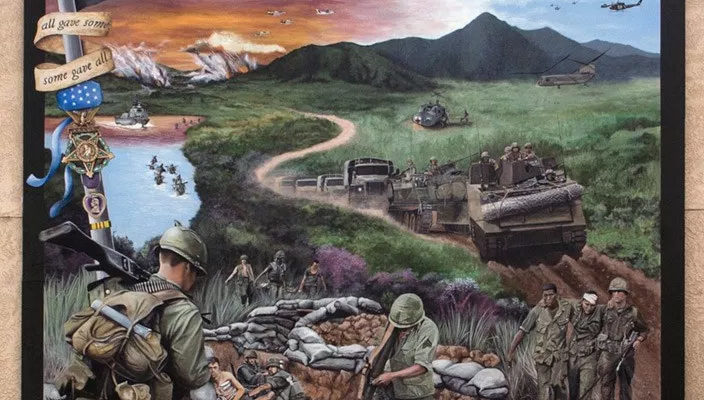In October we will be painting our seventh community mural. These are murals designed by professional artists and painted by the people in our community. This will be a mural in a weekend – painted Saturday and Sunday during the Pumpkin Fair. When you look at the wall each hour you will see it bloom with color and definition! In looking for themes for our murals, many times our history gives us vivid images to put on our walls. One of the little known facts in our country is that the true final connection of the Transcontinental Railroad was not at Promontory, Utah but right here in our back yard at the Mossdale Crossing. The Transcontinental Railroad had been talked about for thirty years before it was actually started. Most of the original plans were a connection from the Missouri River to Oregon. Later plans found the southern route through Texas, New Mexico and Arizona to Southern California. It was cheaper and easier than going through the Sierra Mountains. But, as the Southern Congressmen and Senators left to form the Confederate States of America that meant that the only legislators voting on the bills for the railroad were the Northerners. They did not want to put this key national link in the South. So the “Central Route” was chosen from Omaha to San Francisco. This country was in the midst of a civil war when the work on the Transcontinental Railway was begun in 1862. It was a tremendous undertaking. There were no heavy machines to do the work. All of the work across the deserts and through the mountains was done by hand, with only the help of wheelbarrows and horse or mule wagons. They did not even have the technology of dynamite but used black powder packed into hand drilled holes in the stones to blast their way through. Finding labor was difficult since there was a civil war in progress. At that time many Chinese were escaping from terror and poverty in their country. They made a perfect work force for the railroad. Even though they were small, they were very capable workers. All workers were originally paid $30 per month and given food and lodging. But the Chinese said give us $31 per month and we will take care of our own food because we don’t like your food. There were also Irish immigrants and blacks escaping the aftermath of the civil War as well as soldiers for the north and the south after the end of the Civil War. The iron rails, railcars and engines had to be shipped around South America to the port in San Francisco then loaded onto ships to Sacramento which took months. The equipment, hundreds of barrels of black powder each month, nitroglycerin, food, supplies all were part of the logistical web that needed to be untangled. Incredibly the 1800 miles of track were completed in six years with the Golden spike celebration taking place at Promontory Summit on May 10, 1869. But that was not the true completion of the transcontinental railroad. That only connected the east to Sacramento. The work on the bridge crossing the San Joaquin River at the small settlement of Mossdale had not been completed. Mossdale was the only safe crossing along this area of the river when in 1848 a ferry was built and operated by John Doak. After changing ownership a couple of times, the ferry was sold to William Moss in 1856. Mr. Moss went on the establish the San Francisco Examiner which he later sold to George Hearst. Until the bridge was completed, the passengers and freight stopped at the San Joaquin River and were ferried across to reboard a train on the other side and proceed to the San Francisco Bay. Then on September 8, 1869 the bridge was completed as was the Transcontinental Railroad. The country and all of the territories in between California and the East was now connected. The three month trip around Cape Horn in South America was now a one week trip overland!
Author: admin
Manteca Mural Society featured in ABC10 News.
Interviewed by Kurt Rivera – May 11, 2017
Veteran’s Mural Project
The Manteca Mural Society has narrowed down the list of interested artists to three muralists to paint the 4 th mural of the Veteran’s Mural Project.
The three artists chosen to paint a maquette for the Vietnam Mural is Jessie Marinas from Manteca, Linda Shrader & Echo Westover from Yucca Valley, Ca. and Ella Yates from Ireland.
The Manteca Mural Society received many comments and suggestions from the veterans & the community back in the spring. The consolidated list of ideas were then given to the muralists to submit a sample drawing from each of them. The artistic committee chose 3 finalists to submit a maquette which is due by November 15, 2016.
The size of the renderings will be 16” x 20” and the public & veterans will have a chance to view them at the end of November. One muralist will be chosen to paint the Vietnam Mural.
Get Involved!
It takes a dedicated team to build a better community through art, and we’d love to have you on board. Whether you offer your time, talent or financial contributions, you will make a difference!

The Forgotten War
The Korean War was declared June 25, 1950 but it was never finalized. That feeling still persists for those who fought and those who lived through this conflict. Alvin Mendes pictured in the lower right photo is the only Mantecan still listed as MIA…but he is not forgotten ….
DEDICATION OF THE KOREAN WAR MURAL
The public and all veterans are invited to attend the dedication of the Korean War Mural. This is the third completed mural of “The Veterans Mural Project” sponsored by the Manteca Mural Society. The dedication is May 21, 2016 at 11:00 a.m. in the Bedquarters parking lot at Main St. and Yosemite Ave. The guest speaker is a fellow Mantecan, Eldon Regua retired as a two-star Major General in the United States Army in 2013. His first duty assignment was in West Germany in 1977 and his last assignment was in South Korea in 2013 spanning over 36 years of service to our Nation.
“FILL THE HELMET” FUND RAISER
The community is invited to participate in the “Fill the Helmet” fundraiser sponsored by the Manteca Mural Society. The funds raised will go directly for expenses to begin the Vietnam Mural. It will be the 4 th mural of “The Veterans Mural Project”. Please join us May 28, Saturday, from 10:00 a.m. to 2:00 p.m. in the Bedquarters parking lot at Main St. and Yosemite Ave. Just drive or walk by and drop your donations into the helmet of Manteca’s veterans and members of the Manteca Mural Society. Music provided of Rich Benavides.

Spirit of America
This mural was designed to honor men and women from Manteca who have served our country in the Armed Forces, during World War II. It includes portraits of local veterans and civilians who supported the war effort. The five blue stars at the bottom of the mural and the one gold star at the top of the mural have significant meaning. During WWII the practice of displaying the Blue Star Flag was to honor those serving in the Armed Forces. Manteca had the honor of having five brothers serving in WWII. The Gold Star is displayed if a service member is killed in action or dies in service. During a time when Manteca had a population of less than 5000, it is stunning the hundreds of citizens that entered into World War II. This mural was designed to honor the men and women from Manteca who served our country in the Armed Forces as well as those at home who supported the war effort. Our WWII mural features 8 young veterans from Manteca who served during the war; Bud Dickman was an Ace Pilot in the US Army Air Corps, Bill Castillo was in the US Army, Leland Elliott, served in the US Marine Corps, Marie Huarte Esteves served in the US Navy Reserve Waves, John Machado was in the US Navy, Avis Brewster was an US Army Air Corps nurse, Jay Scalf served in the US Coast Guard, and Woodrow Brumley was in the US Merchant Marines. Doris Williams Knodt, a civilian, supported the home front by making parts for the B-17 bomber. Also featured is Rosie the Riveter, a cultural icon, representing the women who worked in the factories and shipyards during WWII. The five blue stars at the bottom of the mural and the one gold star at the top of the mural have significant meaning. During WWII the practice of displaying the Blue Star Flag was to honor those serving in the Armed Forces. Manteca had the honor of having five Duran brothers serving in WWII. The Gold Star is displayed if a service member is killed in action or dies in service. Of the people pictured in the mural, John Machado was killed in the Pacific and left behind a Gold Star family. Like small towns across America, Manteca’s support and participation in World War II was phenomenal..


